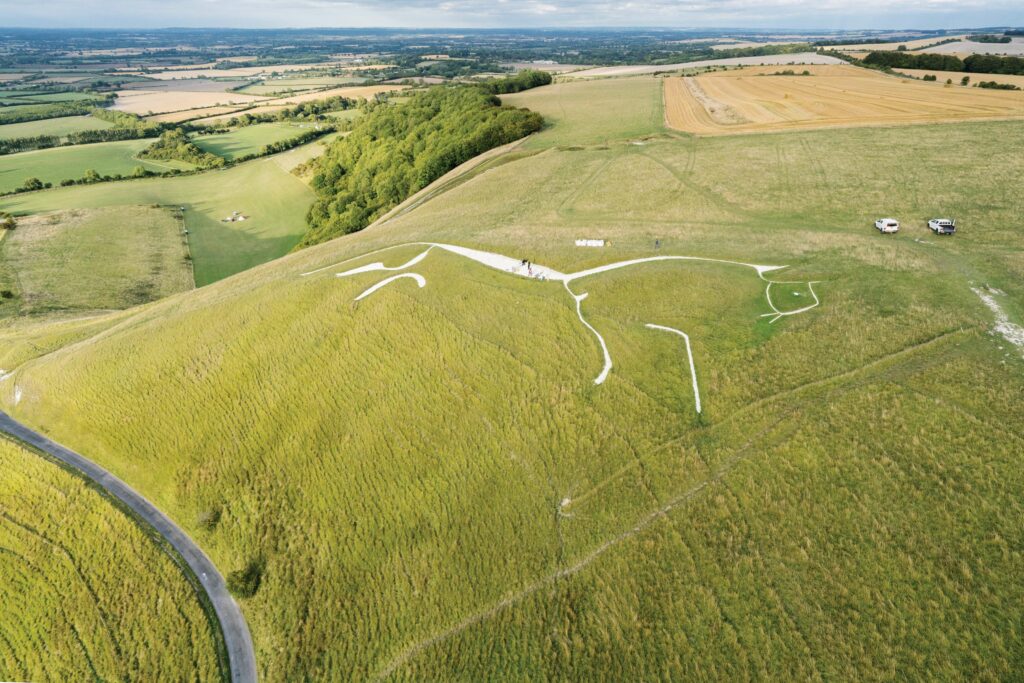
How horses shaped Britain
The countryside would look very different were it not for equines. Tiffany Francis-Baker reveals some of the surprising ways horses have sculpted our landscapes
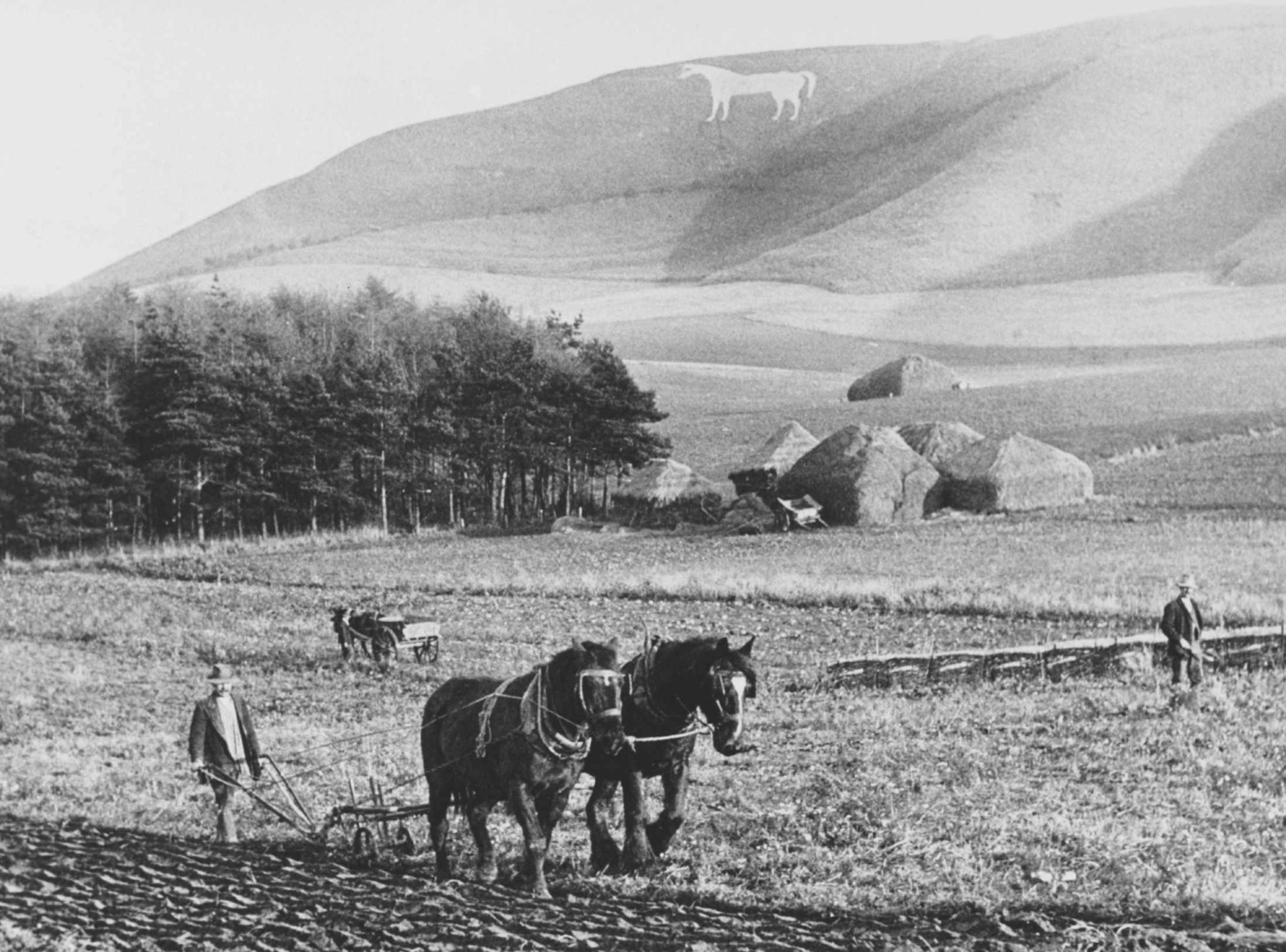
At close quarters, the Uffington White Horse could be any other path scratched into the Oxfordshire hillside. Those bright chalk lines, pressed into the earth by human hands, are designed to be seen from far away. Across the Vale, it is much easier to make out the strange beaked horse over 100 metres long, galloping over the hill.
This is one of a handful of chalk figures scattered across the British landscape, and it has been so well cared for in its 3,000-year lifespan that it had to be covered in turf during the Second World War so Luftwaffe pilots couldn’t use it for navigation.
Why a community of Bronze Age Britons went to the trouble of making it is still unclear, but of all the animals to appear in prehistoric imagery, the horse is one of the most common. Our ancient ancestors obviously venerated horses. Later, the Anglo-Saxons used at least 16 Old English words for horses, each distinguishing between those used for carts, luggage, riding, breeding, royalty and war. So what is it about this animal, this half-tamed hybrid of pet, tool and vehicle, that has captivated the people of Britain for thousands of years?
AGE OF THE HORSE
The earliest known ancestors of the modern horse were small, dog-sized creatures that lived in North America around 55 million years ago. They first arrived in Europe by crossing the Beringia Land Bridge, a grassland steppe between Russia and Alaska that was exposed during the last Ice Age, enabling plants, animals and humans to migrate back and forth across the two continents. But it was not until the last 150,000 years that a relationship formed between humans and horses.
In Europe, they were one of the most hunted species, alongside bison and reindeer, almost driven to extinction before they were domesticated around the Bronze Age, when evidence suggests they were farmed for milk, meat and transport.
By the end of the Bronze Age, a wave of human migration had swept the globe, and with it the domestication of the horse started to change the way people ate, farmed, hunted, travelled, worked and waged war. By the 8th or 9th centuries, the Islamic conquest of Spain and the English crusades helped introduce Arabian stock to Europe, and the horse-breeding industry was born.
“The domestication of the horse changed the way people ate, farmed, hunted and waged war”
Since the introduction of horses on an agricultural scale, the British landscape has been shaped by them – right down to the blades of grass that sweep iconic landscapes such as the South Downs and Salisbury Plains. These former forests, denuded of trees for timber and fuel during the Neolithic period, were turned over to pasture for large grazing animals, and it is mainly the centuries of constant grazing by horses and other animals that has kept them from returning to woodland. Later, horses helped transform the wild landscape into a pastoral one, hauling logs from cleared woodlands and pulling ploughs.
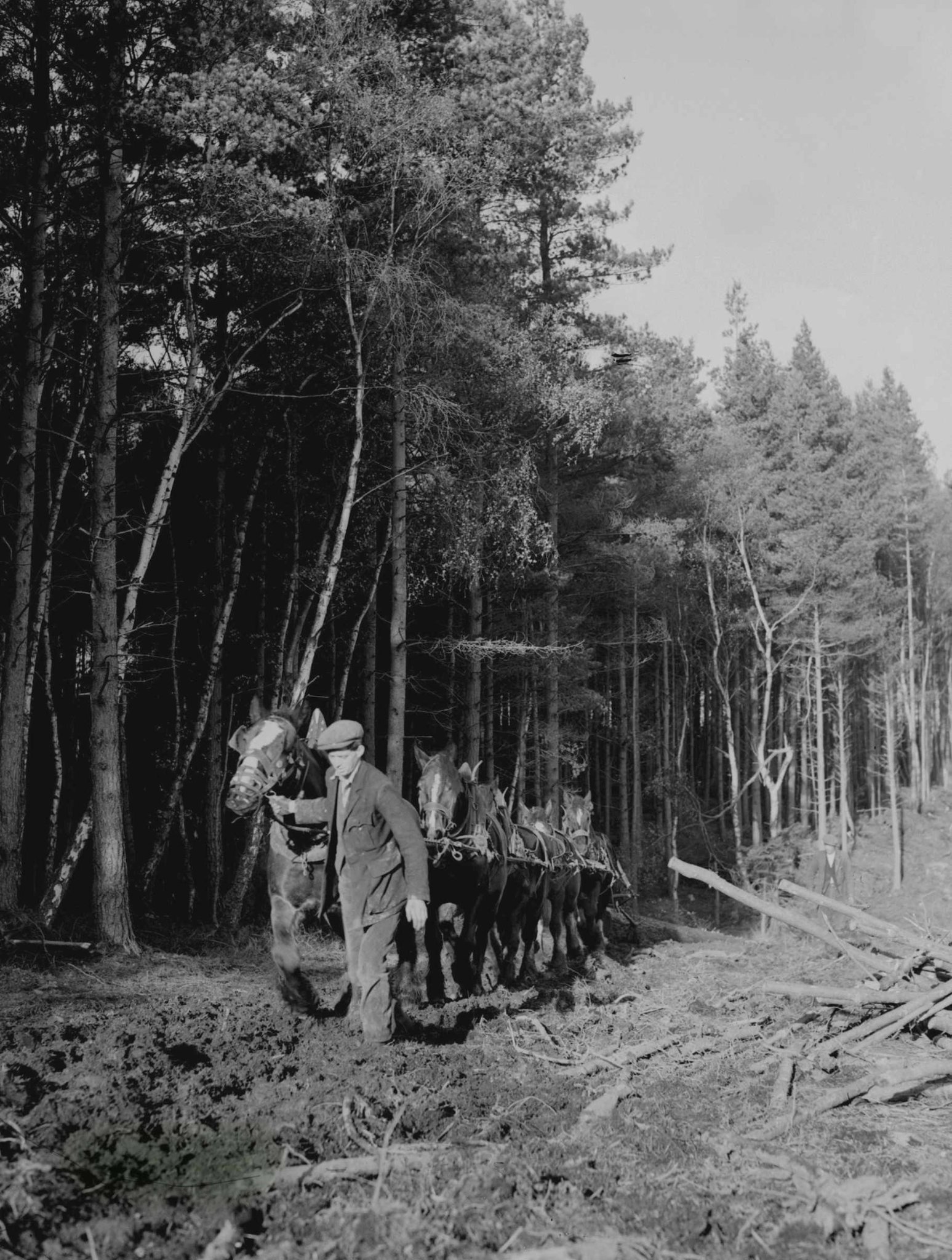
EQUINE CULTURE
Signs of the importance of the horse in our rural history crop up everywhere. Have you ever bought a pint from a pub called The White Horse, The Plough, The Nag’s Head, The Fox and Hounds, or The Coach and Horses? It’s possible you were in a farming village, where men gathered at the end of a long day of ploughing the fields with their horses. Or you may have been on a popular hunting route, where the riders would dismount for a drink after a morning in the field. Or more than likely you were in an old coaching inn, an echo of life before railways and cars replaced the horse-drawn stagecoach.
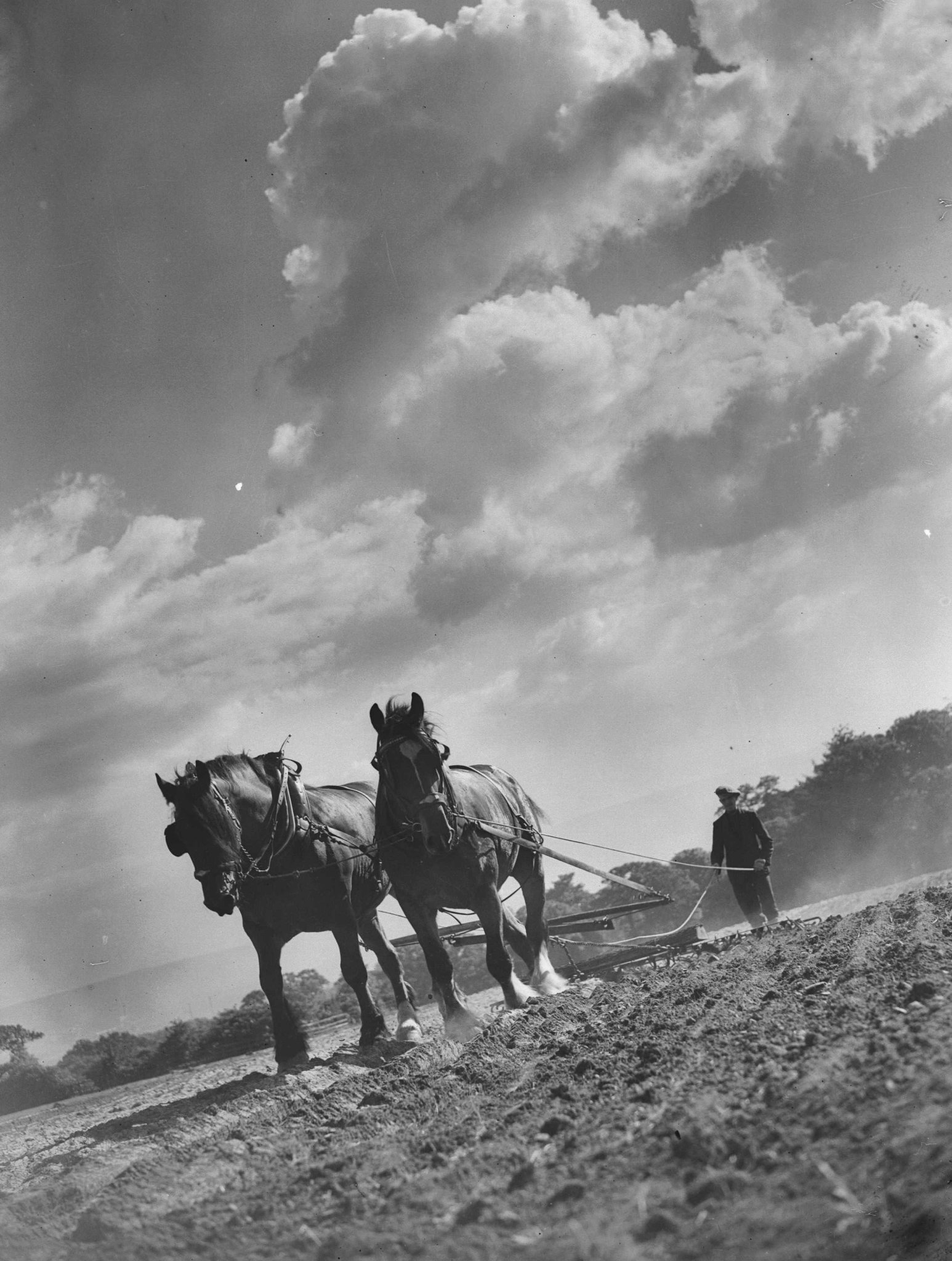
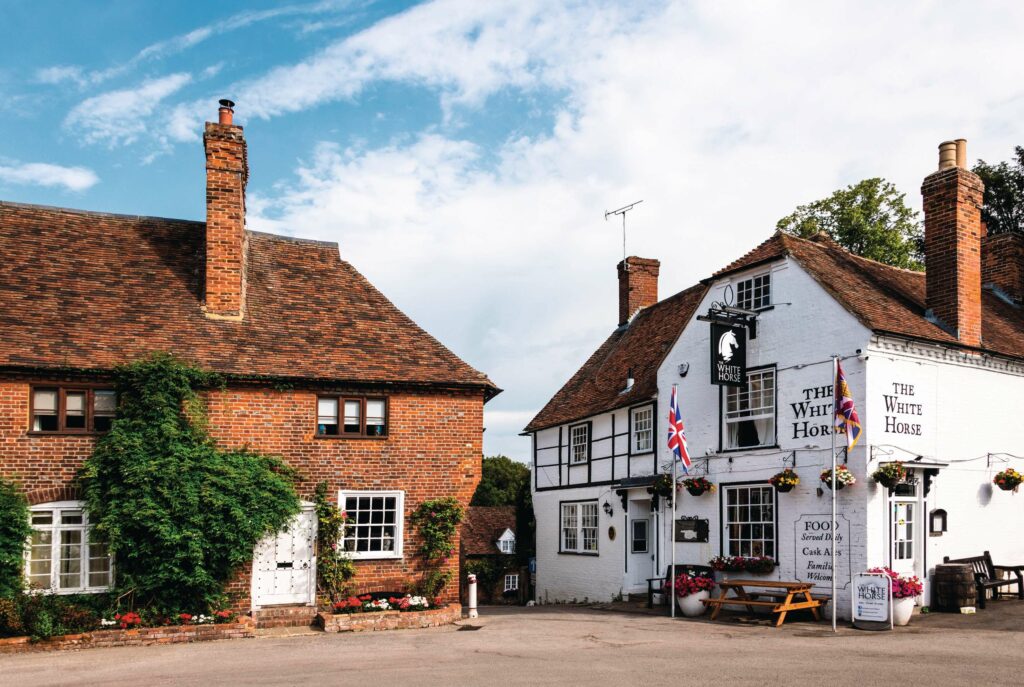
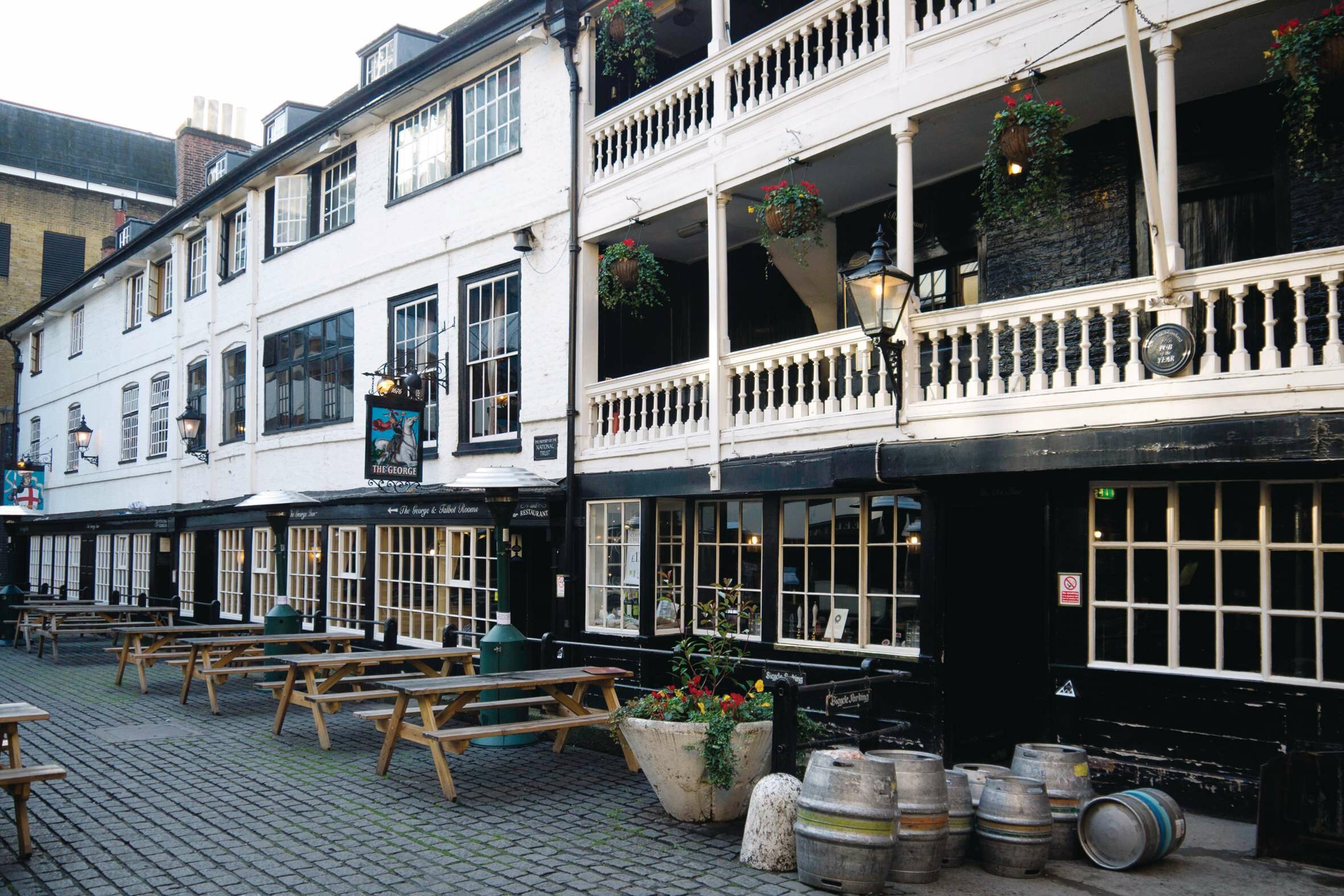
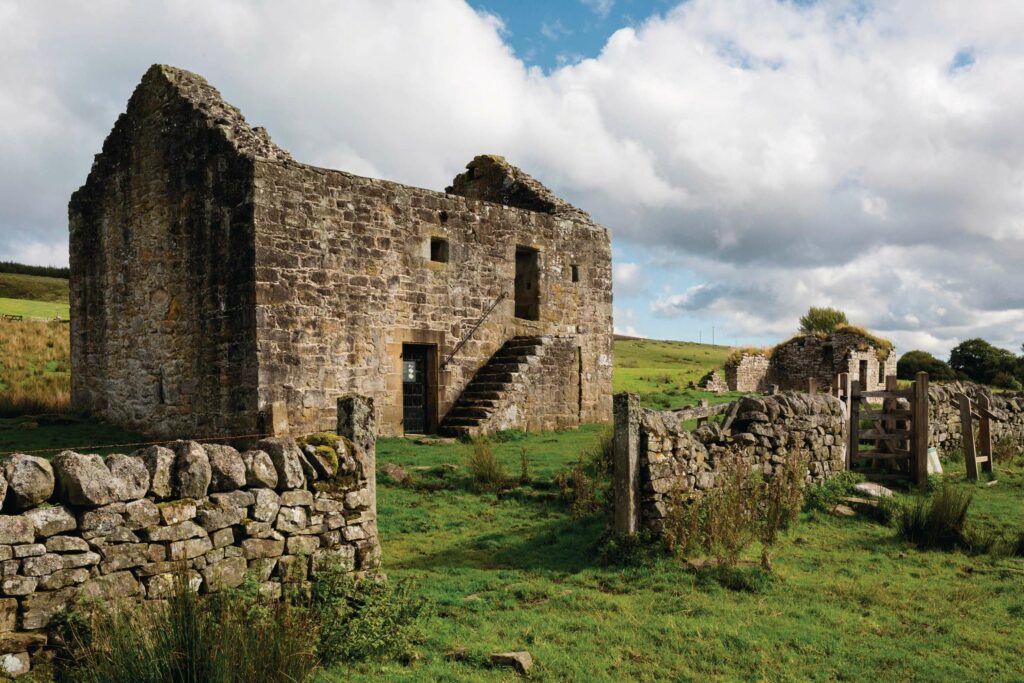
Cities, towns and villages in the UK are littered with equestrian clues such as these, revealing how much we once relied on the domesticated horse in our daily lives. Just south of the River Thames in Southwark, The George Inn is thought to be the last remaining galleried inn in London, now in the care of the National Trust. It’s evidence of the network of coaching inns up and down the country, built to shelter travellers making their way around the UK by horse-drawn stagecoach, the principal means of transport around the country for more than two centuries. Horses, too, were fed and watered there. Hundreds of inns survive, although in many cases the stables have been demolished or converted. Some, like The George, retain original fittings from the stagecoach era; one of the bars even contains a rare tavern clock, whose large dials helped travellers and coach drivers set their watches.
Horses and ponies played a crucial part in Britain’s canal network, too, drawing canal boats from the towpath. In Birmingham, a purpose-built stable called the Roundhouse was designed for passing canal traffic.
These are relics of the legal use of horses; but there are also signs of their nefarious use. On the borders of England and Scotland, the rolling countryside is scattered with fortified dwellings known as bastle houses, with few windows and thick stone walls.
THE HORSE IN THE MODERN COUNTRYSIDE
Over the last few centuries, horses in Britain have seen their societal roles change dramatically, but even though there are now cars instead of carriages and electricity in place of horsepower, horses are far from redundant in the modern world. After all, there are still some 850,000 horses in the UK, shared across 347,000 households. We now value them for their ability to graze nature reserves, pull timber out of fragile habitats, run races and jump fences, carry us through the countryside, help control rioting crowds, and even improve our mental health through equine therapy.
According to the British Equestrian Trade Association, the industry contributes £4.7 billion to the economy, and you only have to visit a country show to see why. We still love to see horses decked in brass, ploughing fields and pulling timber. We watch dressage competitions, even if we no longer associate dressage with the military training it was originally invented for. We set up societies to keep bloodlines healthy and protect native breeds. Why? Because something about these extraordinary animals ignites our curiosity and speaks to our wildest selves.
Whether we’re hacking out in the woods, glued to an Olympic showjumping event or watching a fell pony graze moorland, in a fast-paced world full of stress and tech, we have never needed our equine companions more.
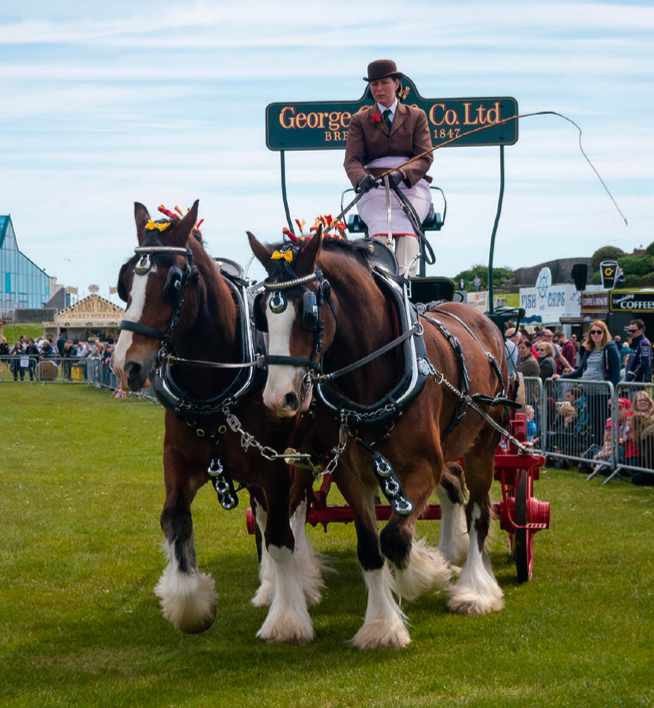
These are a legacy of the horse: for some 300 years from the late 13th century, horseback raiders known as Border Rievers would sweep south from Scotland to plunder isolated farmsteads, before cantering back north to safety. The farmers of these beleaguered regions soon learnt to build secure homes where both family and livestock could take refuge.
“The bridleways of Britain have become the only proof that slower means of production once existed”
Elsewhere, a network of routes grew up over centuries to allow travellers to roam the countryside on horseback. The legacy of this is some 25,000 miles of old bridleways that weave through field and forest alike. Today, bridleways open up vast tracts of countryside, not only to horseriders, but also to walkers, trail runners and cyclists. In some places, the bridleways of Britain, quietly creeping beneath woodland canopies and open skies, have become the only proof that slower and steadier means of production once existed, ones that relied so heavily on horsepower.
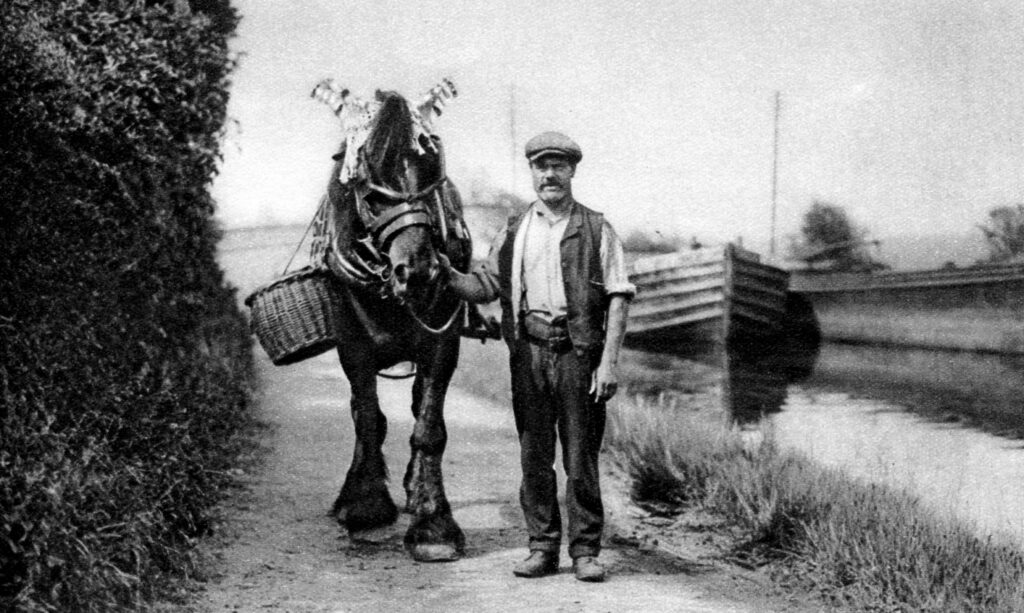
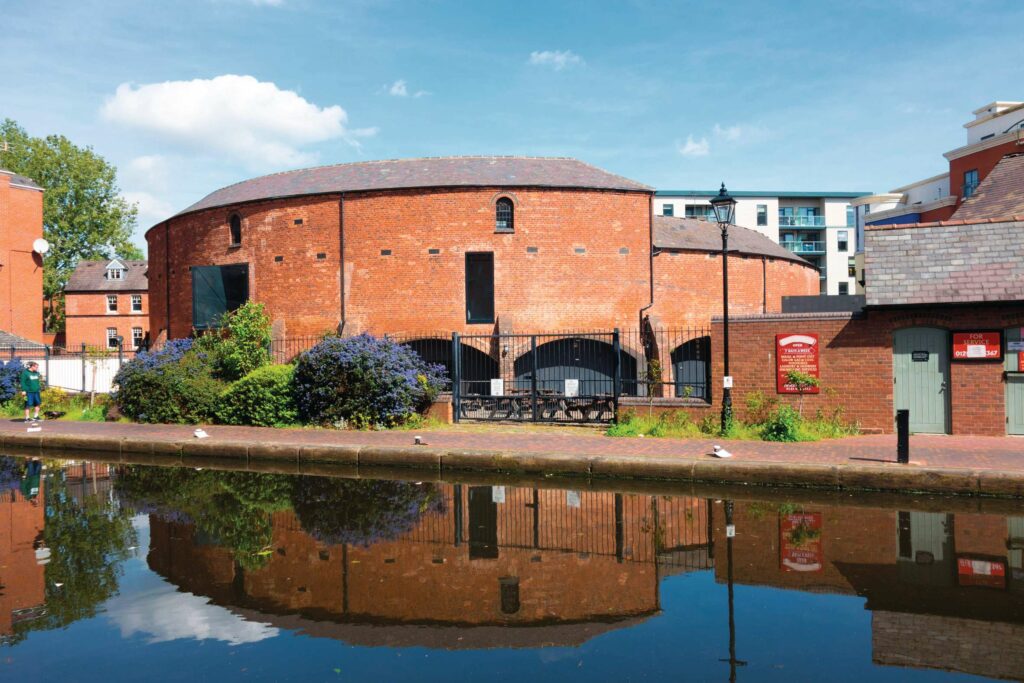
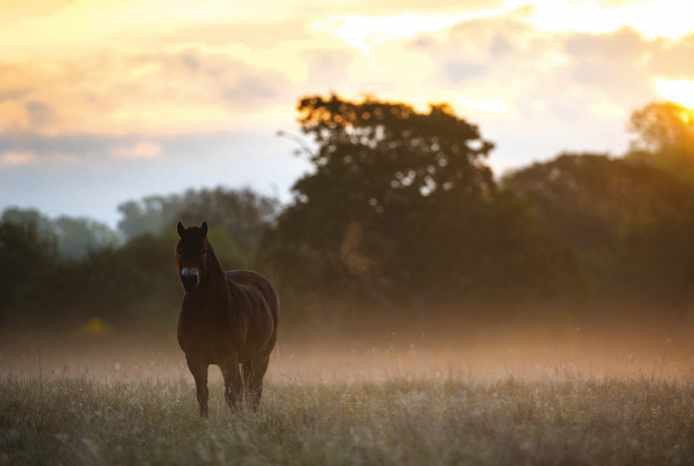
NIBBLING FOR BRITAIN
In case you thought horses were just a living relic of the past, it’s worth noting that many conservationists are excited about their potential role in saving wildlife. They believe horses may come to radically change the character of parts of our countryside once more – through rewilding projects designed to restore natural balance to the land.
Grazing is once more the key. Horses graze in different ways to sheep, cows, goats and rabbits. They have incisor teeth in their upper and lower jaws, while cattle and sheep only have lower incisors; this means they eat different plants in different ways. These preferences can help improve the biodiversity of the land. This is why horses are often used in conservation grazing programmes, such as those at the Knepp Estate in Sussex. The Knepp team introduced a number of species to replace the large animals that would have once roamed there, to see if their presence would increase biodiversity. Along with Longhorn cattle (a proxy for aurochs, the giant cattle extinct since the late Bronze Age) and Tamworth pigs (for wild boar), the Knepp team introduced Exmoor ponies to graze the land, and in doing so, the mosaic of newly created habitats caused wildlife populations to boom. Not only have rare species, including turtle doves and nightingales, returned to Knepp, they have started breeding there, too.
A SPECIAL RELATIONSHIP
Throughout history, humans have valued horses for their strength, speed and temperament. Pulling chariots, carting granite, carrying knights, hauling machine guns, shaping roads, felling trees and creating new Edens; there are few challenges we have set for horses to which they have not risen, even in the face of an increasingly mechanised and digitalised age. But we have also formed a unique bond with horses that, for the most part, we do not share with other animals.
For many of us, horses are softsouled companions that have shaped the landscape of Britain and beyond, and shown us the best and worst of what our species can be. And still they remain our friends and helpers, carrying us away from a disappearing past and forward into an uncertain future. No matter how changeable our world has always been, our connection with horses continues to root us in the collective human experience.

Tiffany Francis-Baker is a nature writer and illustrator from Hampshire. Her book The Bridleway: How Horses Shaped the British Landscape (Bloomsbury £17.99 ) is out now.